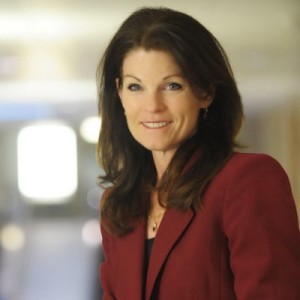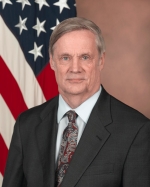
SES reforms must also focus on up-and-coming leaders
A group of former and current federal executives advise against making the mobility provisions in the executive order to reform the Senior Executive Service too...
As the White House finalizes its executive order to improve the Senior Executive Service, a group of former and current federal executives are cautioning against making one key section too narrow.
In the draft version of the order, which Federal News Radio obtained, the White House highlights the need for members of the SES to be more mobile. The document would set a 15 percent goal for all SES members to rotate a minimum of 120 days to different federal agencies, subcomponents, functional areas or to non-federal partners by the end of fiscal 2017.

Beth McGrath, a director of the federal government and commercial clients practice for Deloitte and a former deputy chief management officer at the Defense Department, said it’s more important for up-in-coming senior managers — those in the General Schedule grades 9 to 15 — to experience different parts of the agency or government.
“What needs to change is the journey to SES. It has to be deliberate in nature to ensure people have cross-functional experience,” McGrath said Dec. 3, at the fall conference of the National Academy of Public Administration in Arlington, Virginia. “I’m an expert in nothing, but I feel like I could do anything because of the journey I had.”
McGrath started her 25-plus year career in government as a GS-7 working in logistics. She moved through the DoD, working in contracting, technology and eventually becoming a SES and political appointee running the entire management side of the military.
Several sources said the President is expected to the sign the executive order in December.
At the Social Security Administration, mobility is a key piece to its management development program.
Reggie Wells, the SSA chief human capital officer and deputy commissioner, said the agency has mandatory rotations.
“I highly endorse not getting into the simplistic approach of sending people all over the place or rotating them from one agency to another every few years and expecting them to get meaningful things out of forced rotations,” Wells said. “It’s extremely important to have rotations and take employees out of their comfort zones, especially of technical competence because it forces them to rely on their leadership abilities.”
Modernization and mobility
Wells was one of 24 current federal executives that OMB tapped in March to develop recommendations to reform the SES. President Barack Obama announced his plan to modernize the SES about a year ago in a speech to senior executives.
Wells said when and if the executive order is finalized, he expects mobility to be a key piece of the reform efforts.

“We are anticipating there will be more of a focus on some sort of mobility. It isn’t clear whether it will be across the enterprise in government or certainly mobility within agencies,” he said. “I think it’s important to develop an expertise in the organization.”
The issue of mobility in the SES is not new. It was a provision in the 1978 Civil Service Reform Act that established the SES. But there is disagreement over how much mobility is needed and when it should happen.
But the NAPA fellows said while mobility for the SES is a part of the program, ensuring up-and-coming managers gain a broader level of experience is really key.
At the same time, SSA and the IRS’ successful leadership development programs that include rotational assignments could provide models for the White House’s EO.
Wells said the SSA Executive Resources Board is focusing on developing senior leaders starting at the GS-9 level and continues training through the GS-14 level.
“We place 84 percent of the graduates, who by the way have to be certified by OPM, in to senior executive positions,” he said. “We track the progress in the SES candidate program and do early interventions if there are concerns about development of the candidate. About 54 percent of current SESers have come out of theprogram and when we can’t place a graduate quickly enough, they look for other opportunities in government and take positions outside of SSA.”
Ron Sanders, a vice president at Booz Allen Hamilton and a former CHCO at the Office of the Director for National Intelligence, said the IRS and the SSA are the only two agencies with a success rate of more than 80 percent. He said most agencies see a candidate development program success rate of between 20 and 30 percent.
Another Goldwater-Nichols?
Sanders said the intelligence community and the Defense Department have demonstrated that mandatory rotational assignments are important to motivate the best candidates.
When Congress passed the Goldwater-Nichols Act of 1986, it required service members to take on joint duty assignments in order to be promoted to a flag officer.
Sanders said the IC adopted a similar requirement when it formed in 2005, requiring employees to take rotational assignments to qualify for a senior role. Sanders said more than 12,000 executives have taken advantage of that opportunity.

Bob Hale, a former DoD comptroller and now an adviser at Booz Allen, said maybe the White House and Congress should consider a Goldwater-Nichols type of requirement for the SES in the civilian agencies so GS-14-15s get the broader experience before they become senior executives.
“If the executive order — and I’ve only seen the reports in the media — goes in this direction, I would be concerned if it only dealt with rotations of people when they already are in the SES,” he said.
Beyond the mobility section, Hale said the White House needs to address SES pay. He said it doesn’t have to be only based on salary, though any senior executive must make more than a GS-15, step 10 subordinate.
Hale said Congress or the White House could increase the percentage of people who receive Presidential Rank awards or reward SESers in other significant ways that include cash bonuses.
Another missing piece in the draft executive order is ensuring the qualifications of SES candidates are up to date.
Ed DeSeve, an executive in residence at the Brookings Institution and a former appointee serving in the Obama and President Bill Clinton administrations, said OPM needs to add two key things to the executive core qualifications (ECQ): global awareness and cybersecurity.
“I’m not sure we’ve asked SES to think globally, but they must learn about what’s going on globally to do their jobs,” he said. “I don’t think the discussion and training around cybersecurity goes far enough and I don’t think that is emphasized.”
Another competency related to cybersecurity is enterprise risk management. Several participants in the panel discussion agreed that SESers need to better understand and use enterprise risk management concepts.
McGrath, Wells, Sanders, Hale and a host of other NAPA fellows are writing a book on how to modernize and improve the SES. Sanders said he expects the book to be out in early 2016.
Copyright © 2024 Federal News Network. All rights reserved. This website is not intended for users located within the European Economic Area.
Jason Miller is executive editor of Federal News Network and directs news coverage on the people, policy and programs of the federal government.
Follow @jmillerWFED



